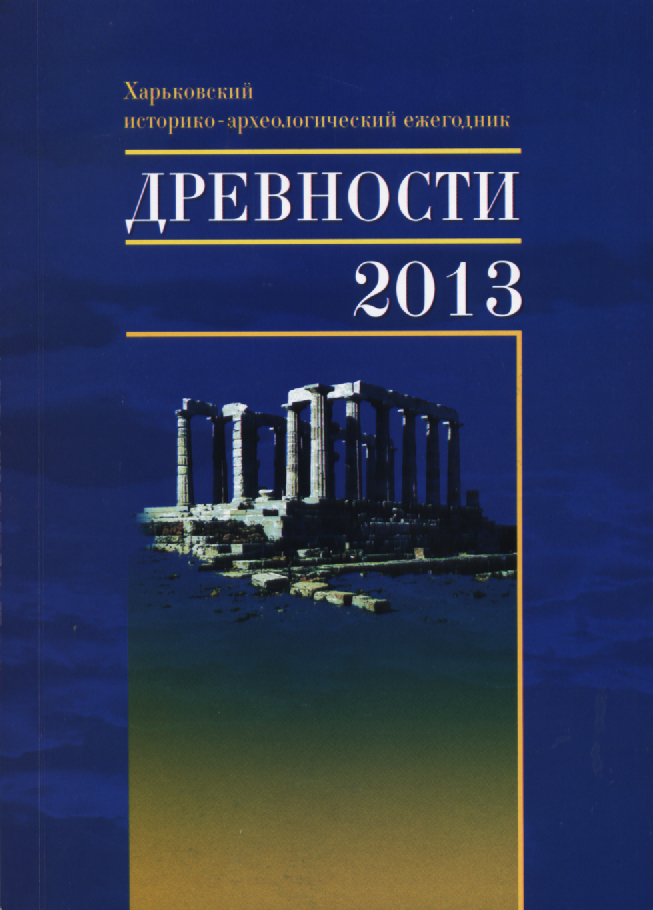Палеоэтноботанические материалы с Животинного городища (по отпечаткам на изделиях из глины)
Abstract
Резюме
Горбаненко С. А. Палеоетноботанічні матеріали з Животинного городища (за відбитками на виробах з глини)
Проведено визначення палеоботанічних матеріалів за відбитками на виробах з глини з Животинного городища боршевської культури. Виявлено 77 відбитків зернівок і насіння культурних і бур’янових рослин, а також 3 відбитки фрагментів колосків зернових. 63 зернівки належать злаковим культурним рослинам, 4 — насінню бобових і технічних, 10 зернівок бур’янів: 15 Panicum miliaceum, 12 Hordeum vulgare (1 колосок), 10 Triticum aestivum s. l., 10 Triticum diccoccon), 9 secale cereale), 7 Avena sp.; 2 насінини Lens culinaris; 2 cannabis sativa; 6 Bromus sp., 4 зернівки бур’янів не визначено.
Інтерпретація матеріалу дозволяє стверджувати, що давнім жителям Животинного був притаманний певний традиціоналізм; разом з тим, спостерігається велика частка вибагливих, але і врожайніших зернових, для яких був необхідний гарний обробіток ґрунту. Наявність бур’янів, у тому числі озимих, дає підстави говорити про використання староорних земель і дво-, трипілля.
Ключові слова: боршевська культура, Животинне городище, палеоетноботанічний спектр (ПБС), зернівки культурних рослин.
Summary
S. Gorbanenko. Paleoethnobotanical Materials From Zhyvotynnoje Hillfort (by Imprints From Pottery)
Determination was carried by imprints paleobotanical materials from Zhyvotynnoje hillfort’s pottery of borshevskaja culture. It was found 77 imprints of grains and seeds cultural and wild plants and 3 print pieces ears of corn of grain. 63 grains belongs to cereal cultivated plants, 4 — seeds of legumes and technical cultural plants, 10 grains of weeds: 15 Panicum miliaceum, 12 Hordeum vulgare (1 spike), 10 Triticum aestivum s. l., 10 Triticum diccoccon), 9 secale cereale), 7 Avena sp.; 2 семени Lens culinaris; 2 cannabis sativa; 6 Bromus sp., 4 grains of weeds are not defined.
Interpretation of the material suggests that the Zhyvotynnoje hillfort`s ancient habitants was certain traditionalism; at the same time, there is a large proportion of fastidious, but also more productive crops that demanded the good soil cultivation. The presence of weeds, including the winter crops, gives grounds to speak about the use of old arable lands and double- and three-field.
Key words: borshevskaja culture, Zhyvotynnoje hillfort, paleoethnobotanical spectrum (РBS), grains of cultivated plants.




